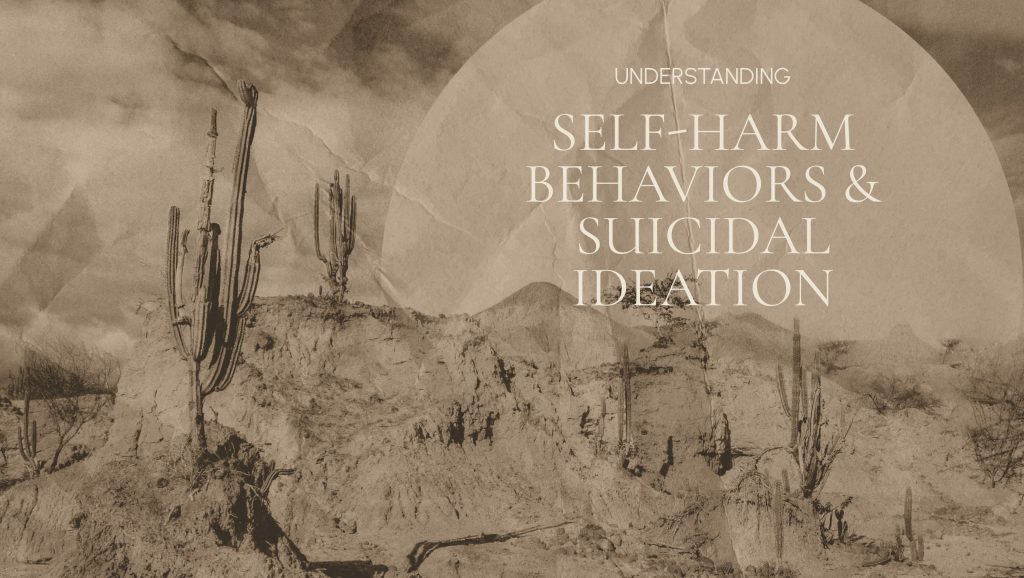Understanding Self-Harm Behaviors and Suicidal Ideation
Self-harm behaviors and suicidal ideation, or thoughts, are expressions of overwhelming and deeply distressing emotional pain. Self-harm behaviors and suicidal ideation are not the same – some people may experience the desire to self-harm, but that does not mean they are suicidal; and some people may experience suicidal ideation and not the desire to self-harm. Oftentimes, they can and do occur at the same time, as they are a very human response to painful dysregulation. One thing that sets humans apart from other mammals is our awareness of our mortality – we can understand that death is inevitable. This awareness can heighten anxiety around emotional and physical pain, and increase the desire to control (and protect one’s self from) those feelings. Self-harm and suicidal ideations are not attention-seeking, but rather are attempts to manage and control painful experiences. Like firefighters respond to emergencies, suicidal thoughts and self-harm behaviors act as emergency responders to put out distressing internal fires.

Self-harm behaviors (also known as non-suicidal self-injury) involve physically harming oneself without suicidal intent. Common self-harm behaviors include cutting, burning, scratching, hitting, or interfering with wound healing. The immediate purpose is often to:
- Regulate intense emotions: Provide a sense of release or a way to externalize overwhelming internal pain.
- Feel something: When feeling numb or disconnected (dissociated).
- Punish oneself: Due to intense self-criticism, feelings of worthlessness, or guilt.
- Communicate distress: When words feel inaccessible, inadequate, or unheard.
While not intended to be lethal, self-harm can accidentally lead to serious injury or death, and it significantly increases the risk of future suicidal behavior.
Suicidality encompasses a range of thoughts and behaviors related to ending one’s life. This can include:
- Ideation: Thoughts about death or wishing to be dead.
- Intent: Desire and plan to attempt suicide.
- Lans: Detailed steps and means for how to end one’s life.
- Attempts: Actions taken with the purpose of ending one’s life.
Suicidality often arises from a complex interplay of factors, including:
- Intolerable emotional pain: Feeling trapped in suffering with no perceived way out.
- Hopelessness: A belief that things will never get better.
- Burdensomeness: A feeling that one is a burden to others.
- Lack of belonging: Feeling disconnected from others.
- Mental health symptoms: Such as depression, anxiety, mania, or substance use.
- Trauma history: Especially complex or early childhood trauma.
It’s vital to remember that both self-harm and suicidality are signs of suffering and are treatable.
HOW CAN WE HELP YOU?
Our dedicated team is committed to supporting clients and their families throughout their therapeutic journey.
